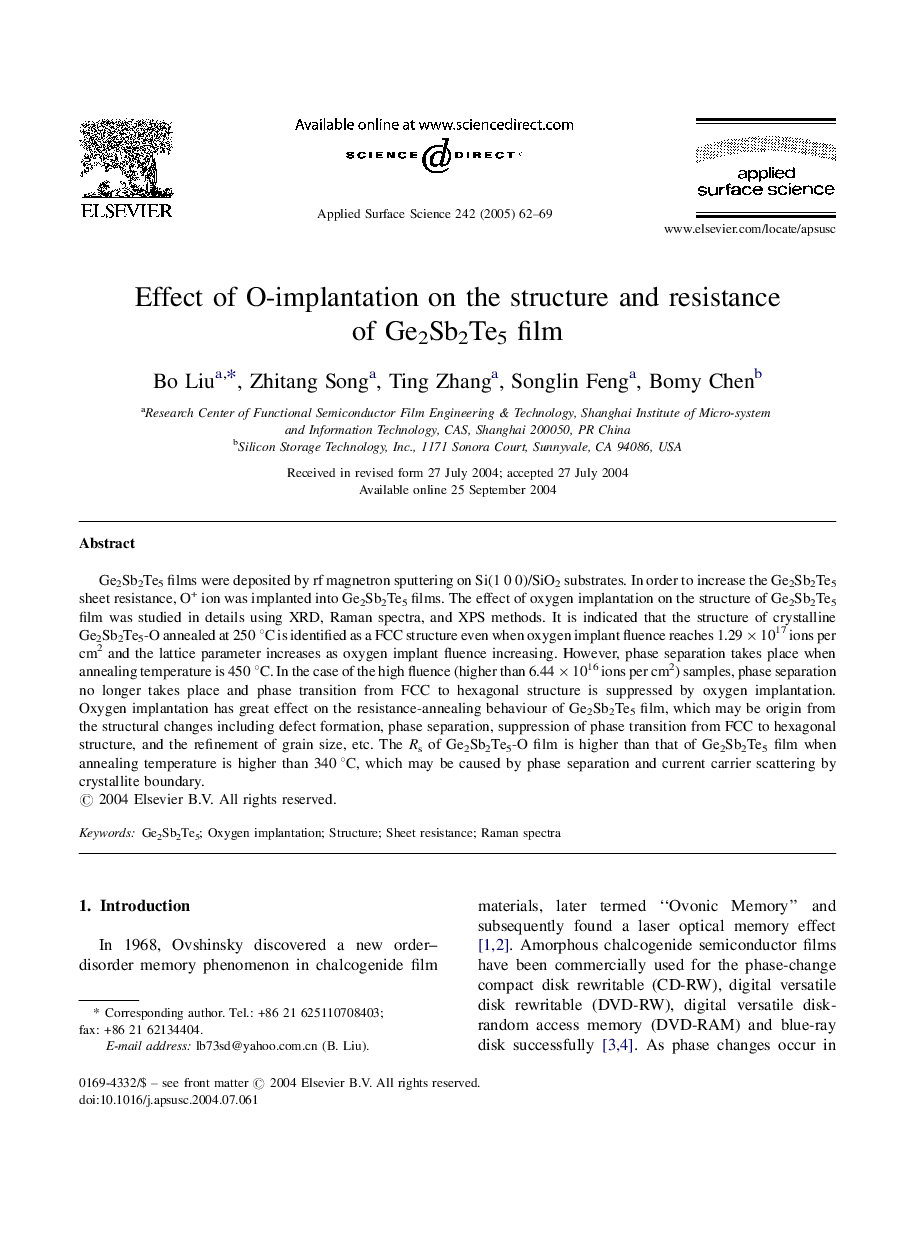| Article ID | Journal | Published Year | Pages | File Type |
|---|---|---|---|---|
| 9566879 | Applied Surface Science | 2005 | 8 Pages |
Abstract
Ge2Sb2Te5 films were deposited by rf magnetron sputtering on Si(1 0 0)/SiO2 substrates. In order to increase the Ge2Sb2Te5 sheet resistance, O+ ion was implanted into Ge2Sb2Te5 films. The effect of oxygen implantation on the structure of Ge2Sb2Te5 film was studied in details using XRD, Raman spectra, and XPS methods. It is indicated that the structure of crystalline Ge2Sb2Te5-O annealed at 250 °C is identified as a FCC structure even when oxygen implant fluence reaches 1.29 à 1017 ions per cm2 and the lattice parameter increases as oxygen implant fluence increasing. However, phase separation takes place when annealing temperature is 450 °C. In the case of the high fluence (higher than 6.44 à 1016 ions per cm2) samples, phase separation no longer takes place and phase transition from FCC to hexagonal structure is suppressed by oxygen implantation. Oxygen implantation has great effect on the resistance-annealing behaviour of Ge2Sb2Te5 film, which may be origin from the structural changes including defect formation, phase separation, suppression of phase transition from FCC to hexagonal structure, and the refinement of grain size, etc. The Rs of Ge2Sb2Te5-O film is higher than that of Ge2Sb2Te5 film when annealing temperature is higher than 340 °C, which may be caused by phase separation and current carrier scattering by crystallite boundary.
Related Topics
Physical Sciences and Engineering
Chemistry
Physical and Theoretical Chemistry
Authors
Bo Liu, Zhitang Song, Ting Zhang, Songlin Feng, Bomy Chen,
